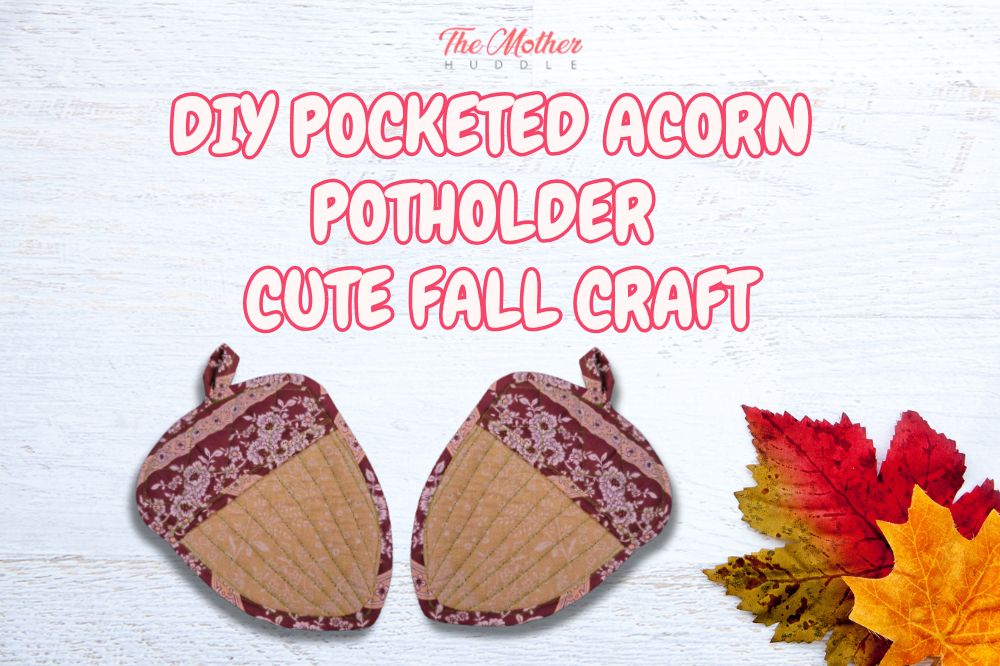Even though it’s an admittedly lovely Spring day outside here in Australia, I am not a warm weather person, so I am still clinging to memories of cooler days, and in that frame of mind, here is the second of my Autumnal themed pocketed pot holders! An acorn shaped delight! I love these pot holders and have used them every day since I made them. They’re designed like little pockets, sort of like a half-and-half mix of an oven mitt and a traditional pot holder. The benefit is that you don’t need two hands to use one, like you do with an oven mitt, but the backs of your fingers are protected, unlike with a normal pot holder. I made these three pot holders, the acorn, pumpkin, and mushroom, entirely from my stash, and they’re all meant to be enjoyable, no-stress, projects that’ll take you an afternoon or so. Now, I have very small hands, so I made my pot holders to fit me, but I am aware that the vast majority of adults have larger hands than mine so I have included a large and small version of the printable template. In either case, print the template out at ‘fit to page’ size for either A4 or Standard Letter and they will be right.
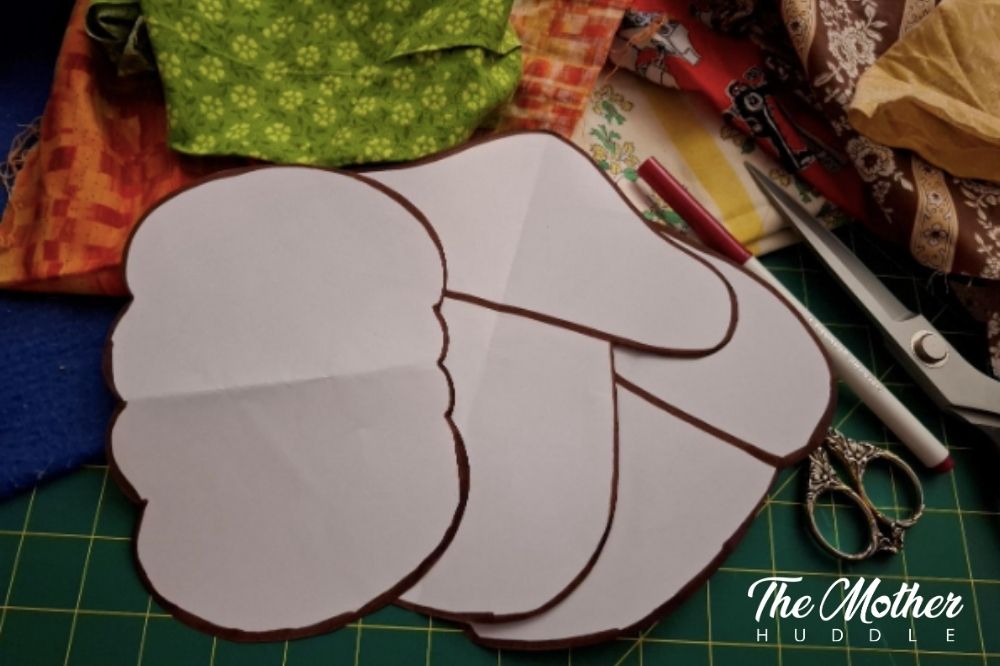
What You Need:
Cotton or wool fabric for outer, inner, and bias binding of the acorn
Cotton or wool batting or fabric for the lining
Downloadable Template, printed and cut out
Scissors
Washable marker or tailor’s chalk
Thread
Notes on fabrics – You are going to be using these to hold potentially very hot items, so it’s very, very important that your fabrics can stand up to that heat, which is why you must use either cotton or wool. Your batting also needs to be cotton or wool, and it can be actual batting or multiple layers of cotton or wool fabric if that’s what you have to hand, just do more layers if you don’t have thick fabric or batting. It also doesn’t matter what it looks like because it’s going to be sandwiched in between your outer and inner fabrics. I had just finished cutting out a thick cotton fleece hoodie for my husband, so I used the scraps of that for my batting, two layers inside each side of my pot holder. If you have a fabric that you’re not sure of the fibre composition, you can do a burn test. Stand at your sink with a small piece of your fabric and light it on fire. If the fabric continues to burn after being lit, and leaves ash residue once you blow the flame out, then you’ve got a natural fibre. It’ll also smell kind of like burnt hair. If the flame goes out and leaves small, hard, balls, or shrivels to a hard edge where it was burnt, and has a plastic-y scent, then it’s polyester and not safe to use for a pot holder.
Step 1
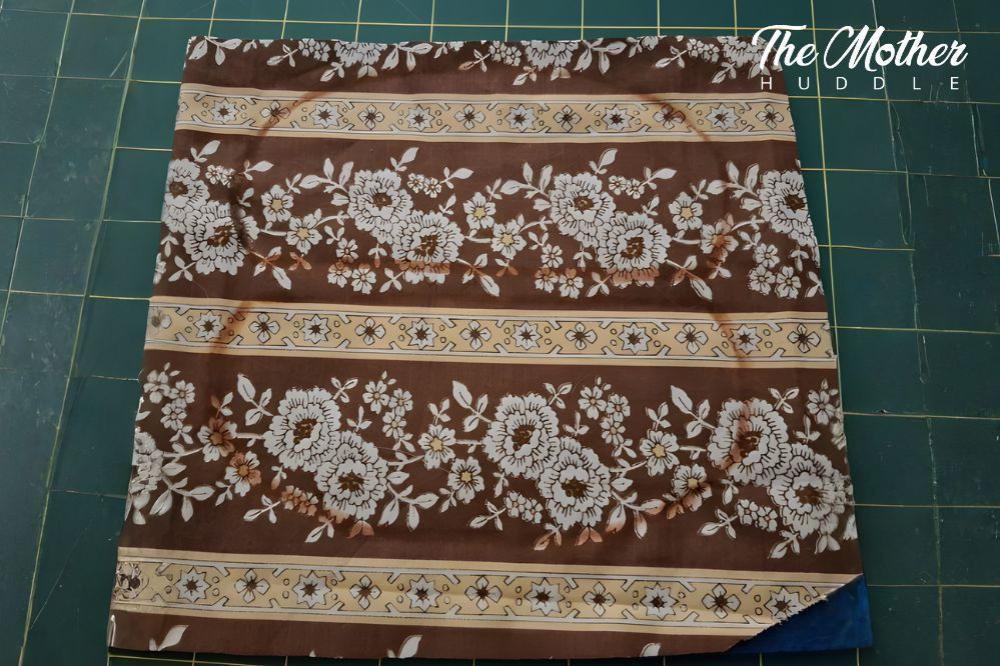
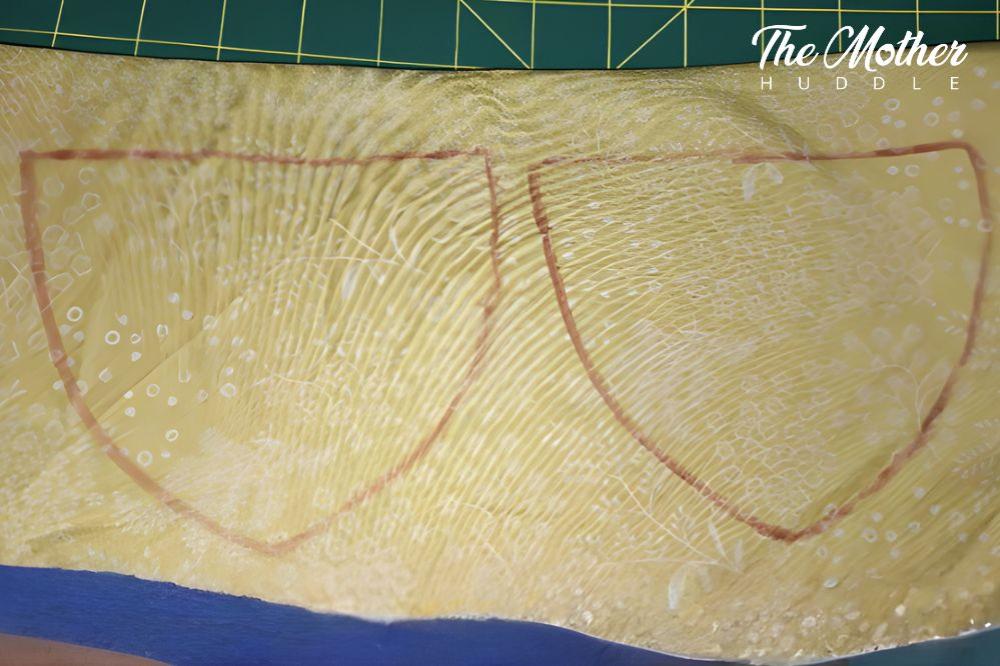
The first step is, as always, to pre-wash and iron your fabrics. Then, put together your fabric ‘sandwich’ of the inner fabric, batting (or layers of thick fabric in lieu of batting) and outer fabric, I used the same inner and outer for my acorns and caps, and use your marker to draw the outlines of your acorn caps and acorns, but don’t cut anything out yet.
Step 2
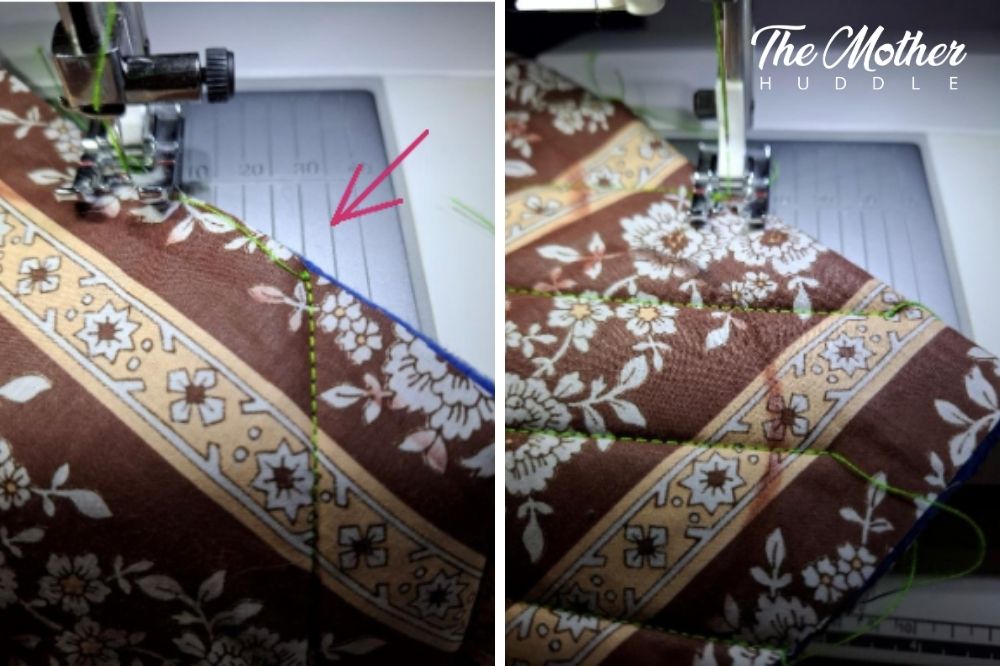
The next step is to quilt your fabric sandwich, I quilted my acorn cap with a 3cm diamond pattern, which I didn’t mark out on the fabric first, I just sewed my first line, then lined up that row of stitching on the 3cm line on the plate of my sewing machine as pictured below, and then sewed another line and so on.

I decided to quilt my acorn caps vertically, but started in the centre and worked my way out on each one to minimise puckering of the outer fabrics. You can of course quilt your acorns any way you like, this is mostly for decoration, but also for structure, so even if you don’t do as many lines as I have, you should still quilt it a little.
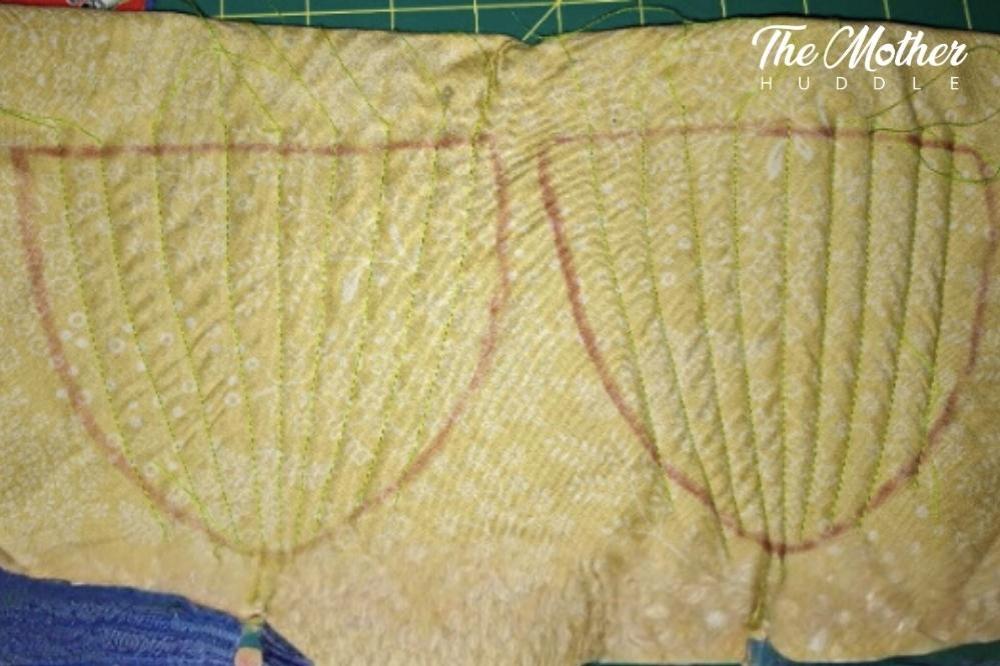
Step 3

Cut everything out! Now pick which cap and acorn you like best so those can be the front ones. Once you’ve picked your front acorn, trim 1cm or ½ inch from along the straight edge so that it’s shorter than the other acorn. The reason for that will become clear later.
Step 4
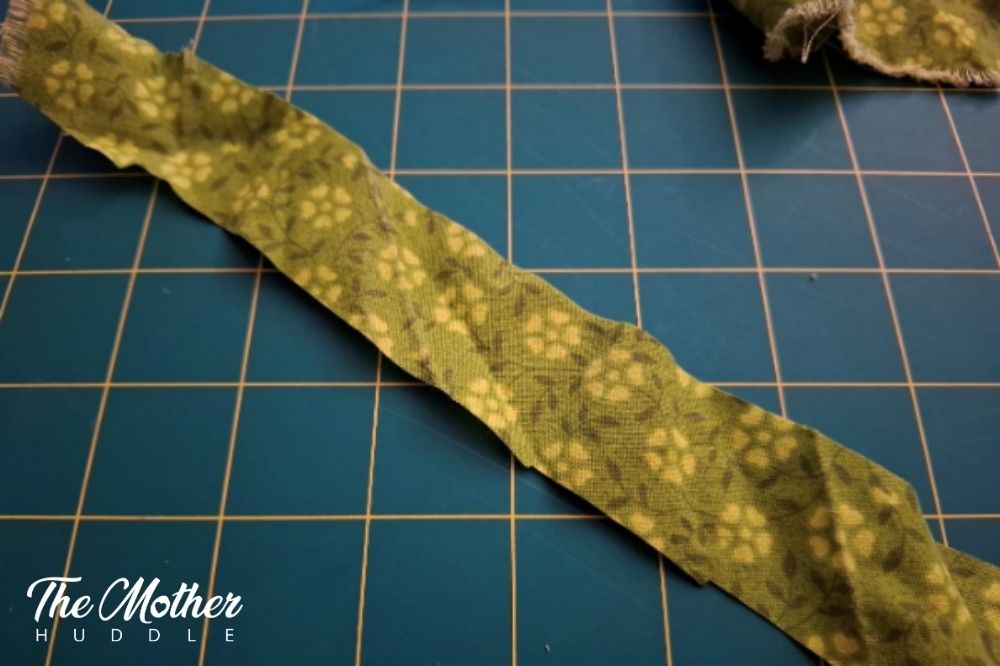
Now we’re going to make some bias binding to go around your acorn’s edges! Simply put, bias binding is 2.5cm or 1’’ strips of fabric, cut on a 45-degree angle to the grain of the fabric, which gives them a little stretch, making them go round curves so much easier than fabric cut on the straight grain. Once you have a few strips cut, you’re going to overlap the ends at a right angle, as shown below, and sew diagonally across where the two strips meet. Trim off the excess and you’ll have a nice long strip of bias tape! I apparently took no good photos of the bias binding I used for my acorns, which is the same fabric as the caps, though you can use whatever fabric takes your fancy, so here’s binding from the Pumpkin and the Mushroom pot holders to show you what I mean.
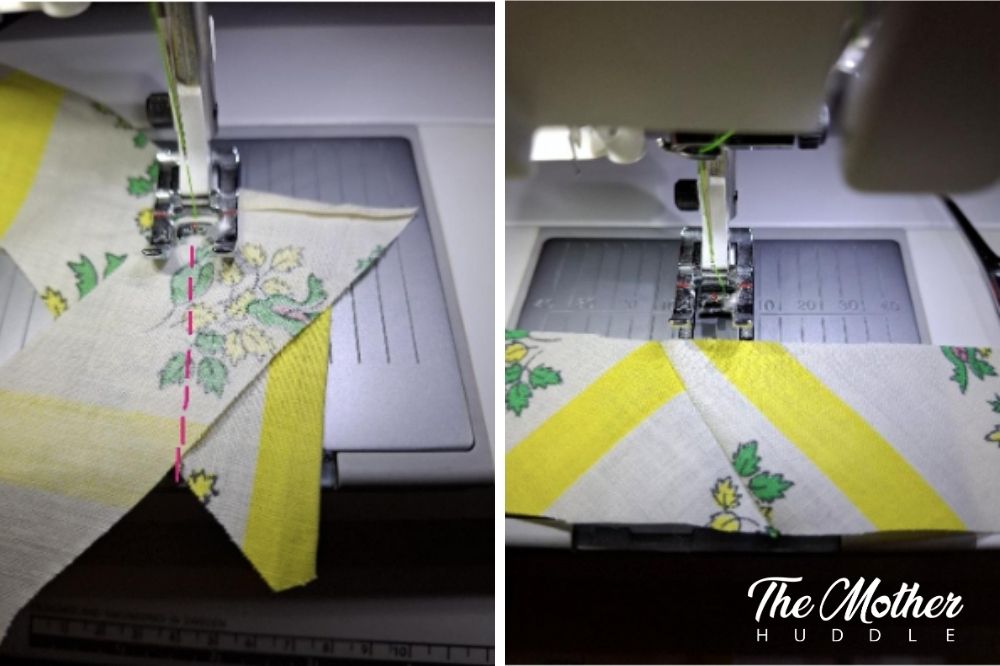
Step 5
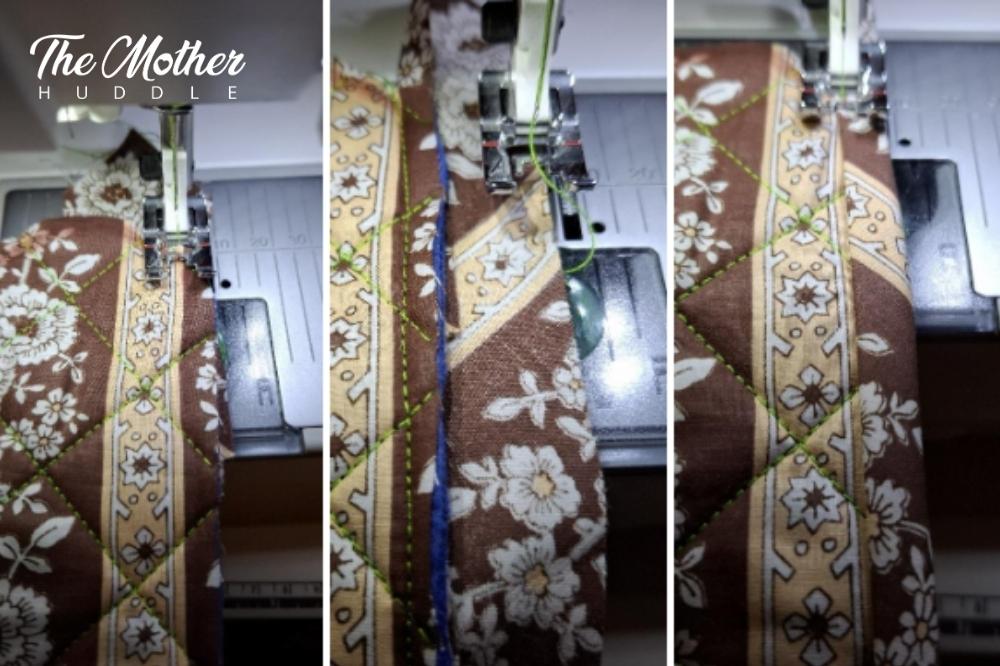
Now we’re going to use our lovely new binding to first bind the straight edges of our caps and acorns. Lay the binding along the straight edge of your cap, right sides together (which means either have your binding underneath your piece with right side facing up, or on top of your piece right side facing down, either is fine at this point). After you sew that down, flip the binding up and pull it around to the other side of your caps. Turn in the raw edge of your binding and topstitch it down.
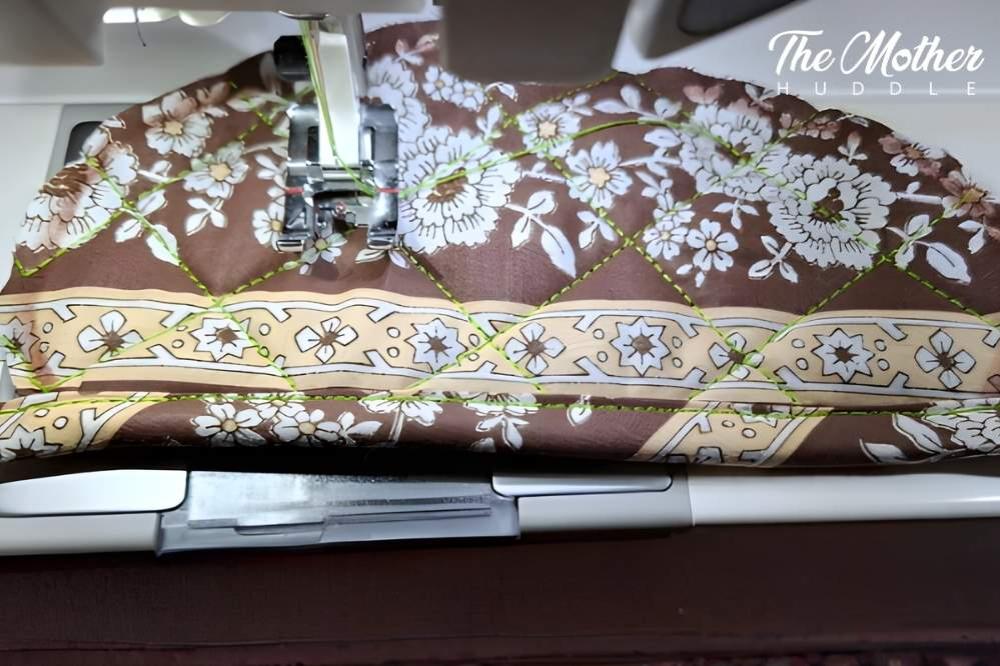
Now do exactly the same thing again with the straight edges of the acorns!


Step 6
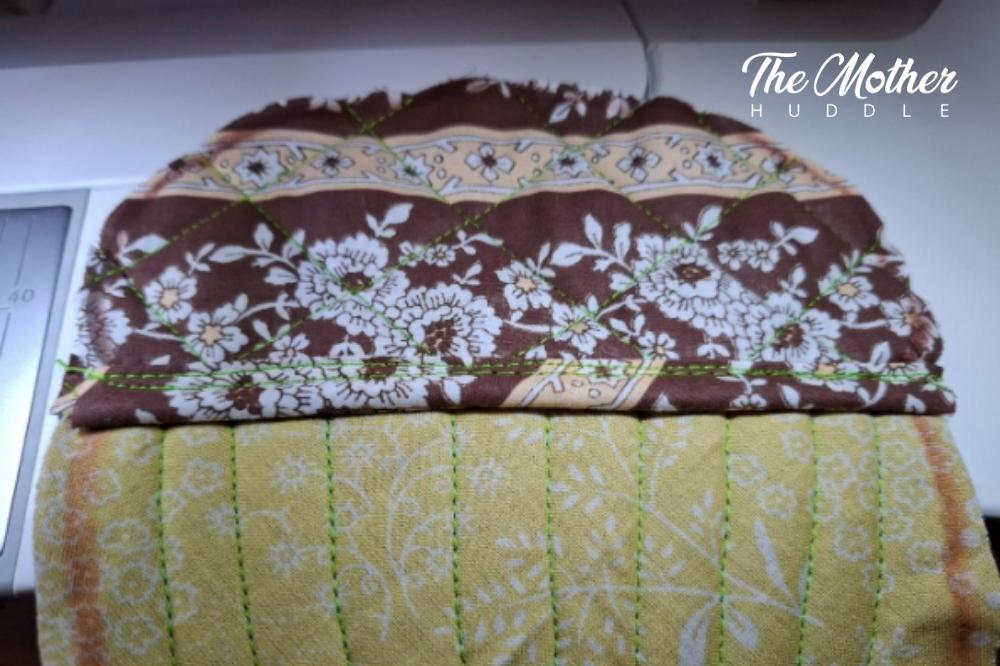
Now you’re going to overlap those bound edges of your acorn and cap that are to be the back of your pot holder, so the acorn you didn’t trim the top off, and sew them together. Make sure your cap is on top of your acorn, as pictured above. It looks more acorny that way!
Step 7
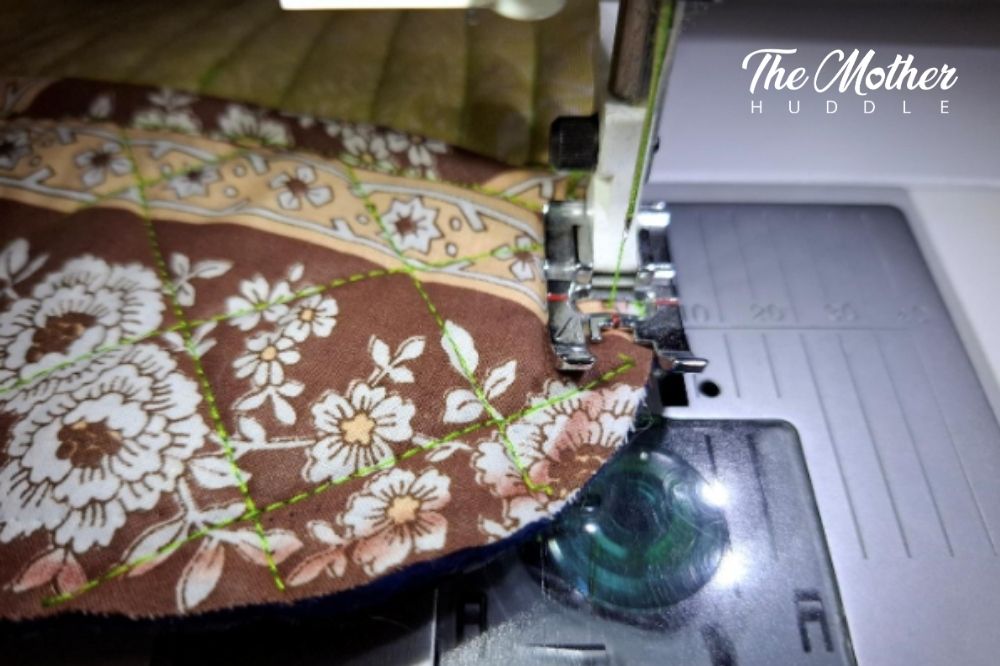
It’s finally time to sew your acorns together! You’ll have three pieces at this point, an acorn and cap sewn together (the back or your pot holder), and a separate cap and acorn (which will be the front). Match your caps together, keeping in mind that the sides you can see are the outsides, so if you’ve used a patterned fabric like mine, make sure you pick which side you like most when deciding how to put things together. Lay your joined acorn (the back) acorn right side facing down, then your acorn cap on top, favoured side up, and starting at the bound edge of your cap, sew with a .5cm or ¼ inch seam allowance, around your caps. Once you’ve gone around your cap, pause for a second, because now is the time to get your second acorn in place. Lay your acorn on top of the joined acorn, but don’t overlap the bound edges on this one, you want the bound edge of your acorn to sit just a little below the bound edge of the acorn cap, to allow you to easily access the little pockets you’ve made. This is why you trimmed off the top of the acorn you liked best earlier! Once you’ve got it lined up nicely, sew all the way around your acorns, too. Trim off any edges beyond that narrow seam allowance, and it should look like this from the front! See how the bound edges are sitting next to each other, not overlapping?

Step 8

Now to bind the raw edges of your acorns! Flip your acorn over so you’re looking at the back. Lay your bias binding, right side down, on top of your acorn, and fold in the first .5cm or ¼ inch as pictured above, this makes for a neater edge later. Keeping the edge of your binding flush with the edge of your cap, carefully sew around until you reach the centre of the top of your acorn cap, because I have a neat, but slightly fiddly, way of make the hanging loop for your pot holder out of the bias binding.
Step 9

At the centre top of your acorn cap fold in the edges of your bias tape towards the centre of the tape, then fold that in half, and top stitch it closed for 8cm or about 3 inches.
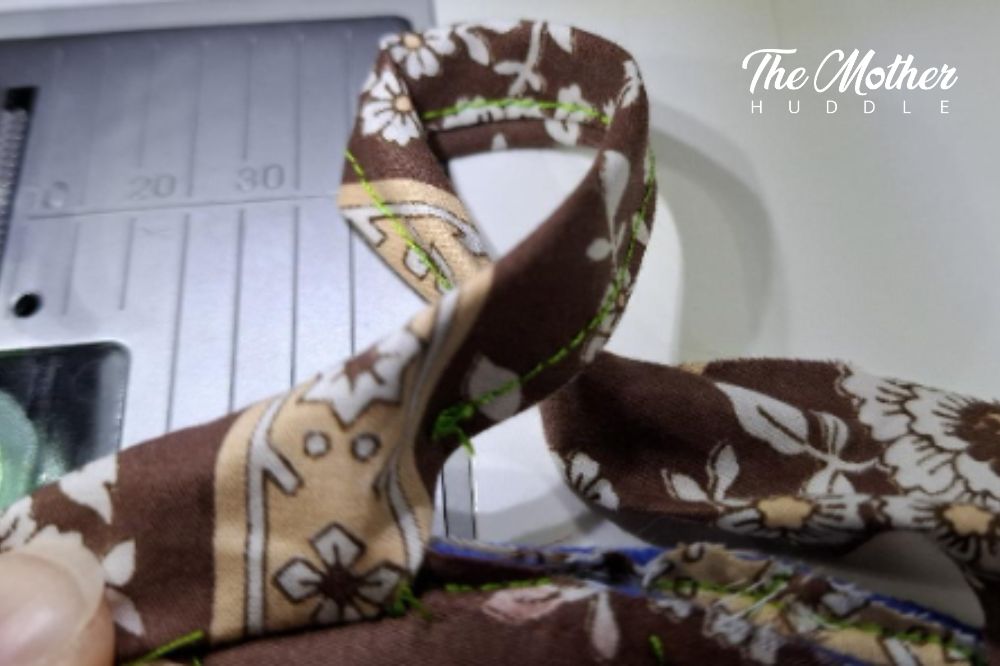
To make the loop you simply fold the bias binding back on itself and open out the section after your stitching, and start sewing it down like before!
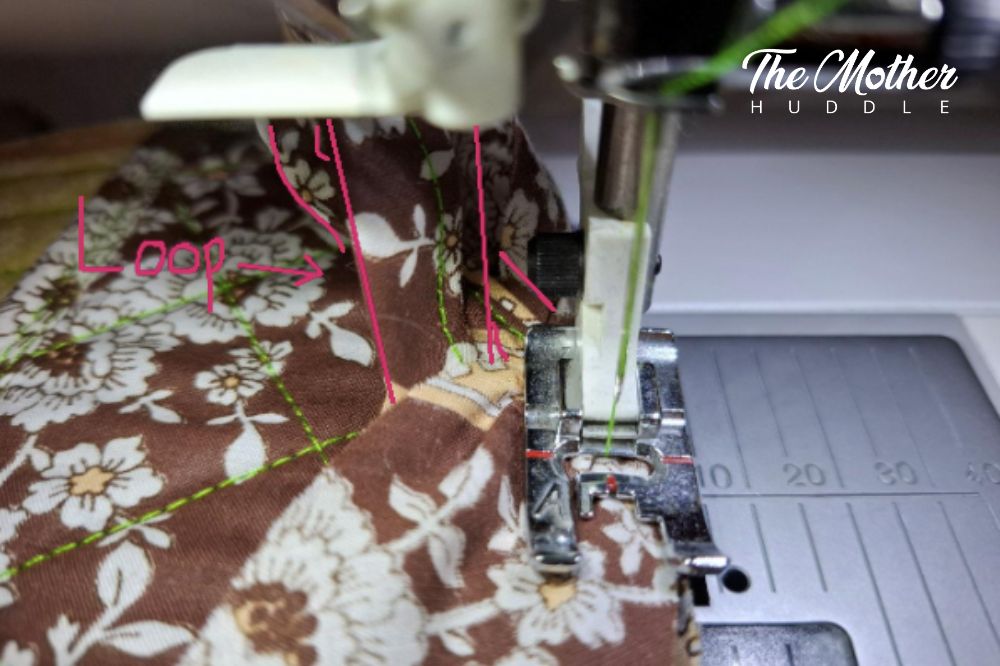
Continue sewing the binding on the rest of the way around your acorn, overlapping your starting point by 1cm or ½ inch and trim off any excess.
Step 10
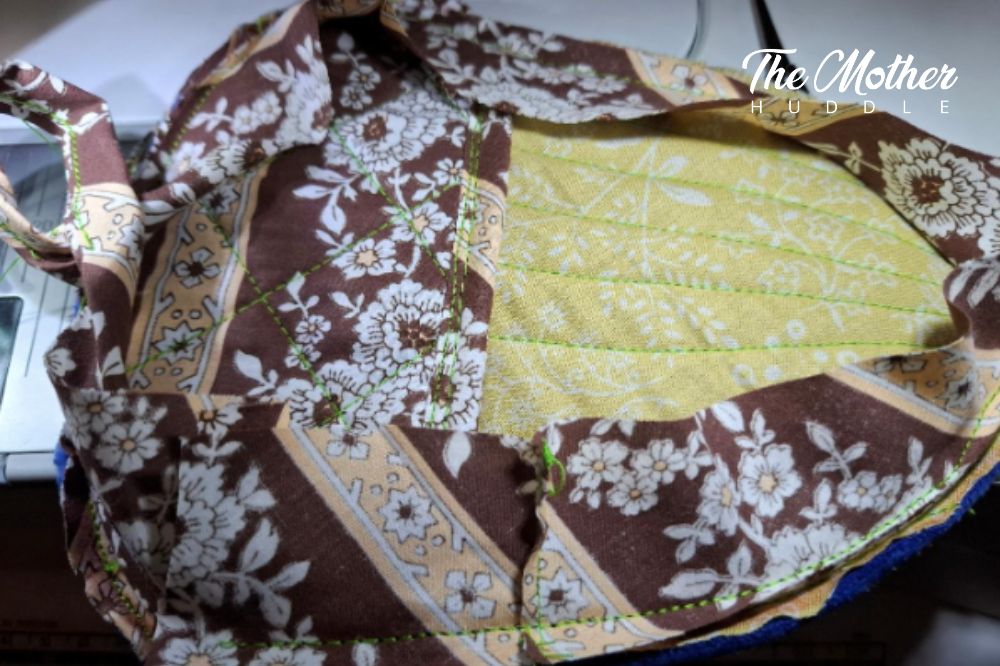
With your bias binding attached to the back of your acorn, it will look like this. Now to finish those raw edges and make it pretty, trim your edges down if they need it so they are all .5cm or ¼ inch, and then pull the binding around the edge of your acorn, so that the raw edge of the binding is now at the front of your pot holder.

Finally, turn in the raw edges of your bias binding, and neatly top stitch it down.
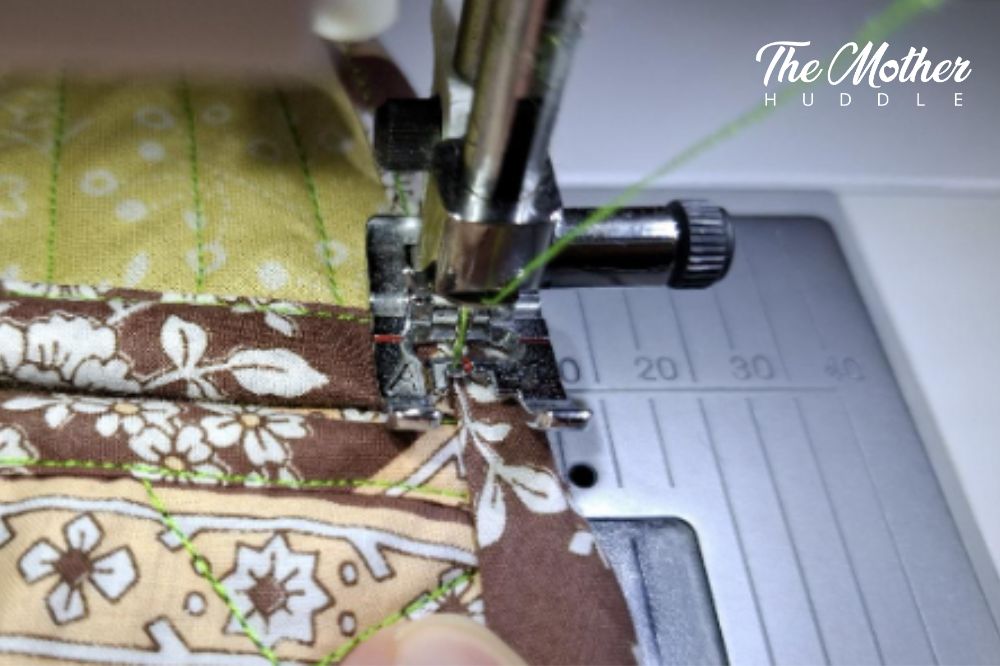
I find it can be helpful to use something with a fine tip to hold down the little overlap in the bias binding where we made our loop whilst I top stitched that part.
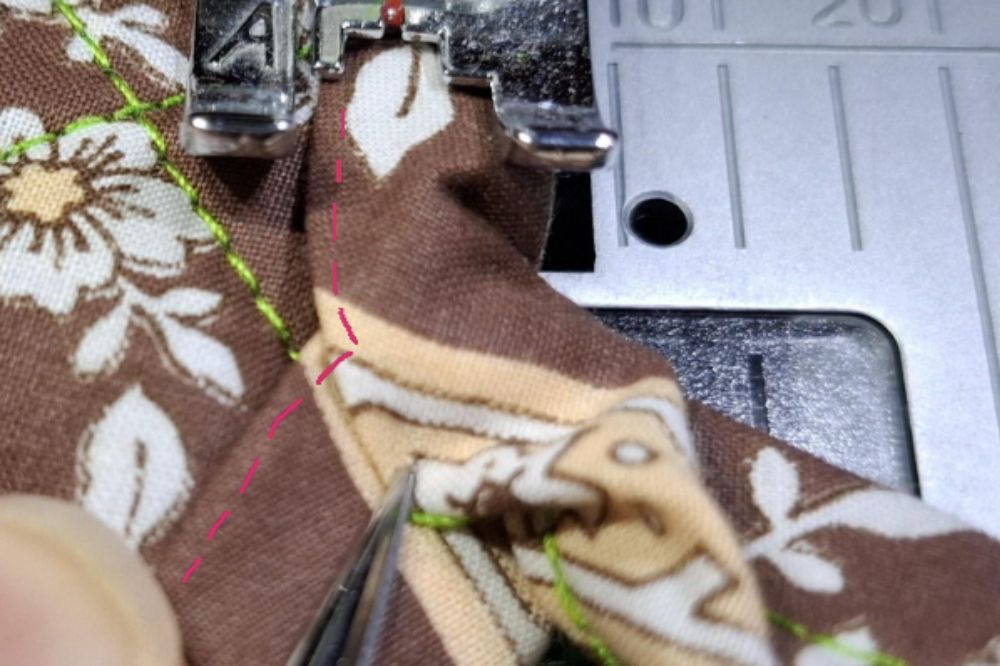
Now you have a completed, adorable, and functional acorn pot holder! I have these hanging up in my kitchen and as I said, I use them all the time, plus, they look SO CUTE when I’m not using them! Win-win! I really hope you have a go at making one, and look out for the upcoming Mushroom pot holder to complete your Fall collection! Who knows, maybe I’ll make a whole range of seasonal pocketed pot holders! Ideas are already beginning to percolate!
FREE DOWNLOADABLE POCKETED ACORN POTHOLDER TEMPLATE
Want to try the DIY Pumpkin Potholder? It’s the first in our Autumn Potholder Collection. This cute fall craft is perfect for adding a cozy, seasonal touch to your kitchen. With its bright pumpkin design and easy sewing steps, it’s a fun project for beginners and experienced crafters.

